Many parents of children from 6 months of age observe an increasing need for attention in their children. Since a child of this age still cannot move independently, manufacturers of children's goods invented a device called Walkers.
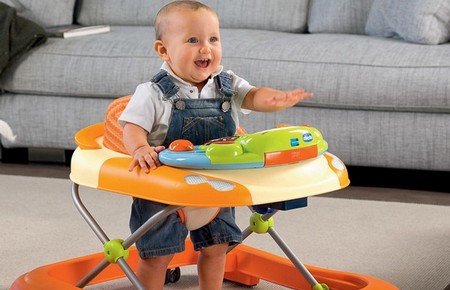
A wheeled device for teaching a child up to 1 year old to walk and keep him level - these are baby walkers. For support inside there is a supporting soft seat.
They allowed the young researcher to receive the long-awaited mobility, and adults to unload their hands. Helpful parents begin to ask questions to experienced mothers, pediatricians and are just looking for information on the Internet about when to start putting a child on a walker? Just in this article the main points on which adults should pay attention are considered.
It is strictly forbidden to leave the child in the walker alone!
Contraindications

- Low or high muscle tone legs in children. The device is designed in such a way that the baby basically moves on toes. It is recommended to carefully adjust the walker and shoe the baby with light shoes for a better setting of the foot.
- The child has diaper rash or other skin lesions in places of contact with walkers.
- The child has signs of rickets.
- In a child, the function of the musculoskeletal system is impaired.
Need to remember!
- Legs should be level;
- Dress the child on the legs of a sandal;
- Adjust the walker to fit the height of the child.
When can I use
- The most important thing is that the baby should be at least 6 months old! The optimal age when you can try to put the baby in a walker7 - 8 months! This is due to the physical readiness of the muscles that help the child maintain the body in an upright position. The child must be able to climb legs near the support or with the help of adults.
- As soon as the baby can sit on its own, without falling on the barrels, you will immediately realize that the muscles of his back have become stronger and that the child can be put on walkers. How many months this will happen - depends on each child individually (~ 6 - 8 months).
- The psychological readiness of children. The child himself with his motor activity and the desire to crawl, to walk with support will give the elders a signal of readiness for new exploits. If the baby has not crawled (how many months has it started to crawl?), then getting used to the walker, he can completely skip this most important stage of development.
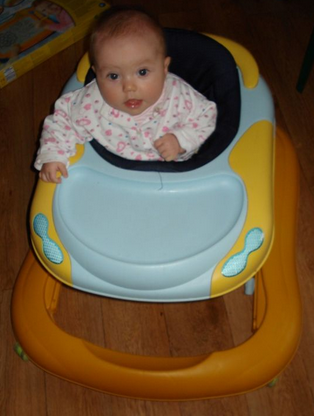
Talk about the boys
Due to the physical characteristics of the boys, many parents fear their long stay in the walker. They argue this with the possibility of a negative effect on the formation of the urogenital system of boys due to the inevitable friction of the perineum, compression of the genitals and the occurrence of diaper rash. Discussing the topic of when you can put boys on a walker, orthopedists and pediatricians are advised to adhere to general recommendations, limiting the baby's stay in walkers to no more than forty minutes per day.
What about girls?
Similar questions are asked by the parents of all the princesses. The fact is that girls are more at risk of hip dysplasia. This disease of the musculoskeletal system is aggravated by walkers, if it has not been previously diagnosed. Before deciding how many months girls start to be attached to walkers, it is worth paying special attention to her physical preparation. Any girl in the future will become a mother. Therefore, it is worth taking care of the health of its pelvic bones, joints and spine.
For all the pros and cons, do not forget that a child in a walker will be able to look at the world from a different angle, train his ability to coordinate, become independent faster and satisfy the thirst for knowledge.
Mom walkers provide a respite.
How to choose a walker
- The base of the walker should be wide and stable (preferably triangular).
- The back should be stiff and high (to avoid the incorrect landing of the child. Because the musculoskeletal system of the child is still weakly formed).
- Wide and deep seats made of waterproof fabric. Not too tough.
- Large wheels spinning in all directions. The more wheels the better. Choose a walker with a wheel stop.
- Adjustable height.
- Removable worktop with toys, tray or music panel.
Young parents, purchasing a walker, expect that the child will learn to walk earlier, be able to move around, learn the world around him, and they will have some time to relax. Whether the expectations of the parents are justified, whether the walkers are so practical, what are the consequences of their use - we will consider in more detail.

Positive effect of walkers on the physiology of the child: “FOR” walkers
- The kid receives new positive feelings and emotions, which favorably affects his psycho-emotional development.
- He understands that he can move freely, there is an opportunity to explore the surrounding objects himself, to independently get and reach for a bright toy, touch new objects.
- In an upright position, the child perceives the surrounding environment in a different way.
- Movement activity increases, which diversifies movements. During this period, physical activity positively affects the development of thinking and the formation of new connections in the cerebral cortex.
- Toddlers are attracted to walkers as an interesting, fascinating toy, to which mobile rings, balls, sound buttons, rattles are attached, which develops fine motor skills of fingers and tactile sensations.
The design of the walker provides a good level of security and is designed in such a way that the child cannot reach dangerous places (sockets, stove, dishes on the table). For some time, parents will be able to “take a time out”, take a break or do the necessary household chores.

Negative aspects of using a walker: “AGAINST” walkers
- The development of motor skills and stability slows down, the start of independent walking is pushed back, because the child practically does not make efforts to keep himself upright.In addition, he does not put the foot on the whole foot, but pushes with his fingers or as if walking “on tiptoe”, which forms an incorrect position of the ankle joint. In the walker, the baby does not have the opportunity to squat, climb, pull himself up.
- Not quite the correct position of the body in the walkers affects the development of the leg muscles, the position of the hip joints, leads to premature vertical load on the spine, its possible curvature and overstrain of the spinal muscles.
- When using baby walkers, the baby crawls out. It is at this time that the muscles of the whole body are strengthened, the coordination and coordination of movements improves. This is the body’s natural preparation for walking.
- The child feels uncertainly in space, poorly holds the balance, which is formed in the very initial stage, when he is just learning to stand.
- There is a negative effect on the cerebellum, which is responsible for the vestibular apparatus, spatial orientation and coordination of movements.
- The baby does not fully develop a sense of danger and self-preservation, he does not know how to “fall” correctly, as is characteristic of children, which sometimes leads to serious injuries. Learning this in later infancy, the child will still have to go through the stage of "right fall" and awareness of the danger from objects (door, door sill, corner furniture, etc.).
- If a positive moment can be considered that a child in a walker cannot reach dangerous objects due to their design, then this same moment is also negative, because at the age of one year, it is through tactile sensations (touch, take, feel by touch) that the knowledge of the properties of objects and things (hot, cold, slippery, heavy) passes.
- Walkers are traumatic. The child can move in them quite quickly and, despite the restraints, hit hard directly on the walker. Sometimes they turn over, bumping into obstacles (door sills, a bent corner of the carpet) and then the baby, falling out of them, may get injured.
Video: walkers PRO and CON
Influence of walkers on the development of the baby
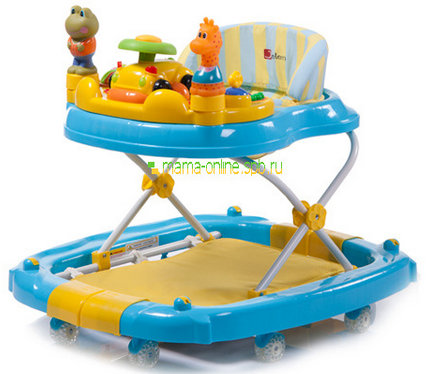
It would seem that walkers contribute to the physical and psycho-emotional development of the child, and at the same time, many studies prove the opposite.
In infancy, physical development is directly related to the formation of the human psyche. Pediatricians and psychologists argue that the crawl period is an important stage in the development and formation of the psyche not only of infants, but also in their future life. Therefore, it is advisable not to limit the child to a crawl period in which the body receives a comprehensive natural development.
Walkers, supposedly providing the child with relative freedom of movement, studying the world around him and the properties of objects, nevertheless, delay psycho-emotional development. Such children 2-3 weeks later get on their feet and begin to walk. On the one hand, they do not develop enough sense of danger and fear, on the other hand, they experience self-doubt when walking independently and seek support from their parents. Shyness, a tendency to causeless panic appear.
Pediatricians believe that the playpen will be more appropriate for the proper physical development of the child. It will reliably limit the child from injuries, from “unauthorized” movements, while at the same time giving him the opportunity to make “correct” movements and does not limit physical activity (sitting, getting up, stepping over, holding on to the sides, crawling). The choice is yours, parents.
We also read: All about jumpers
Expert opinion: At what age can walkers be used






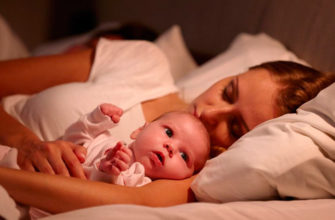

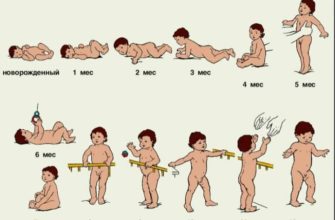
And I think no walker can replace a parent's hand, my parents taught me to walk without a walker, I think this is the best way to teach a child to walk.
My son was born in 2003 in April. Half a year passed in joyful chores. Then they began to think about the arena. But a friend decided to give us a walker from her youngest. And in the 7th month we are on a walker. The son took them with a bang. Literally from the first days, with their help, I walked all over the apartment, got to previously inaccessible places, which gave him even more delight. And by the age of 8 months he could already walk independently. Generally necessary thing at an early stage of development.
17, the prohibition of boys only because of the spine. Girls also due to the fact that it is possible to harm internal organs. . Thank you, I was at the children's doctor and forgot to ask about it, and now we are only 5 months old for examination, therefore I ask on the site. So I will not plant
In Soviet times, our parents raised us without walkers and arenas. And all the children are Soviet and walk well and everything is normal with their health, and in our time this is a problematic issue. My opinion is not to put a child on a walker.